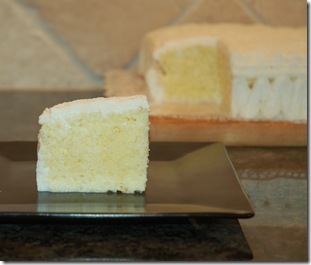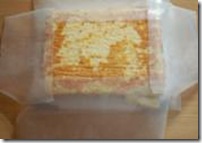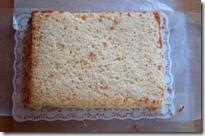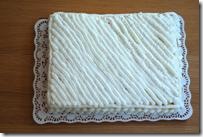
I guess you could tell that this isn't dessert, but it will shortly be Passover and I couldn't pass up the opportunity to put in our favorite Passover food (we really like charoses, too) .
Some people like matzo balls that are lead sinkers - others like them light as a feather. With slight variations in the recipe, you can produce the exact kind that you like. The trick is in the method of mixing them. The matzo balls I like least are those made by following the recipe on the back of the matzo meal box that says to just mix all of the ingredients together. This makes for a matzo ball that is tough and coarse.
Let's start with the soup.
In the old days they used old hens for the soup. They had access to chicken necks and backs and feet! These parts made great soup. I don't know about you, but in my suburban market, I can't get backs or necks or especially not feet! The best that I can do is buy a whole chicken or some packages of cut-up chicken and that's what I have to make soup. Here's the honest truth - I supplement with canned stock. Maybe - that's a big maybe, if I used more chickens and simmered and simmered and reduced and reduced, I'd come out with great stock. But, some very good stock is sitting on the shelves and I use it to help out my 2-hour, 1 chicken stockpot. (When I have lots of time, I use chicken wings, which I roast first at 450 degrees for about 40 minutes, and then I deglaze the pan, throw it into a stockpot with water instead of the stock, plus all of the ingredients below, and continue with the recipe).
Serves 6-10 (18-22 matzo balls)
For the Soup
4 pounds chicken parts, or 1 roaster
1/2 head of celery, washed and cut into 1" chunks
6 carrots, peeled and cut into 1" chunks
2-3 sprigs of fresh dillweed, optional
salt and pepper to taste
2 quarts canned chicken stock ( I use Wolfgang Puck, Organic when kosher isn't an issue)
3 quarts water (or enough to cover the chicken)
Place the chicken, celery, carrots and dill into a large stockpot. Add the stock and water.

Bring to a boil, cover and simmer for 1 hour.
Cook the soup for another hour. If the soup is not tasty at this point, simmer it uncovered, to concentrate the flavors. Taste the soup and adjust the salt and pepper to taste (If you are using canned stock, do not add salt until after reducing it, or it will be too salty). When the soup has the flavor you like, it can be used immediately to make the matzo balls, or can be refrigerated overnight (skim off fat if using immediately).
The next day remove any fat that has solidified on the top of the soup.
For the Matzo Balls
2-1/4 cups matzo meal
8 large eggs
1/2 cup chicken stock (should be at room temperature)
1-3/4 teaspoons salt, scant
1/2 cup oil
pepper, to taste
The manner in which you make the matzo balls will determine whether they are dense or light.
For Dense and Coarse Balls
Lightly whisk together the eggs, salt, oil and chicken stock. Stir in the matzo meal all at once. Cover the bowl with plastic wrap and refrigerate 30-60 minutes.
For Firm Balls (our favorite)
Lightly whisk together the eggs, salt, oil, and chicken stock. Stir in the matzo meal all at once. Cover with plastic wrap and refrigerate 2-8 hours. The mixture will have thickened so much that a spoon will stand up by itself.
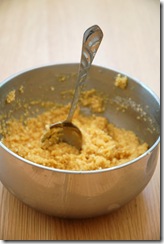
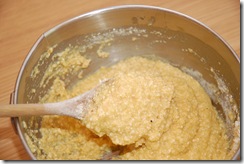
The longer you refrigerate the uncooked mixture, the softer the cooked balls will be (our favorite is a 2-hour matzo ball).
For Light Balls
Lightly whisk together the eggs, salt, and oil. Whisk in the matzo meal a little at a time. Stir in the chicken stock. Cover with plastic wrap and refrigerate 4-8 hours.
For Light as a Feather Balls
Substitute seltzer for the chicken stock, and add ¼ teaspoon more salt to the batter. Follow the directions for Light Balls, above. (I'm told that 1/4 teaspoon baking soda can also be added, but I would NEVER use baking soda for Passover - my tradition.)
To cook the matzo balls:
We like to cook the matzo balls in the soup. We think they are tastiest this way - they do soak up the soup and that's the point! You should have plenty of soup to accomodate the matzo balls soaking some up.
Bring the stock to a simmer.
Using damp hands, shape the matzo mixture into balls about 1-1/4" in diameter.
Use a light touch for lighter balls, and pack them little more firmly if you like dense ones.

Make all the balls and then drop them into the soup. For the lightest balls, drop the dough by rounded tablespoonful instead of making balls.
Cook, covered for 45 minutes. If serving immediately, add back in the reserved vegetables and chicken (if using). Let heat through, and then serve. Or, refrigerate the matzo balls in the broth overnight. If you don't like the way clear broth looks or feels in the mouth, finely chop some of the vegetables in the processor, and add them back to the broth.
Serves 6-10 (18-22 matzo balls)
